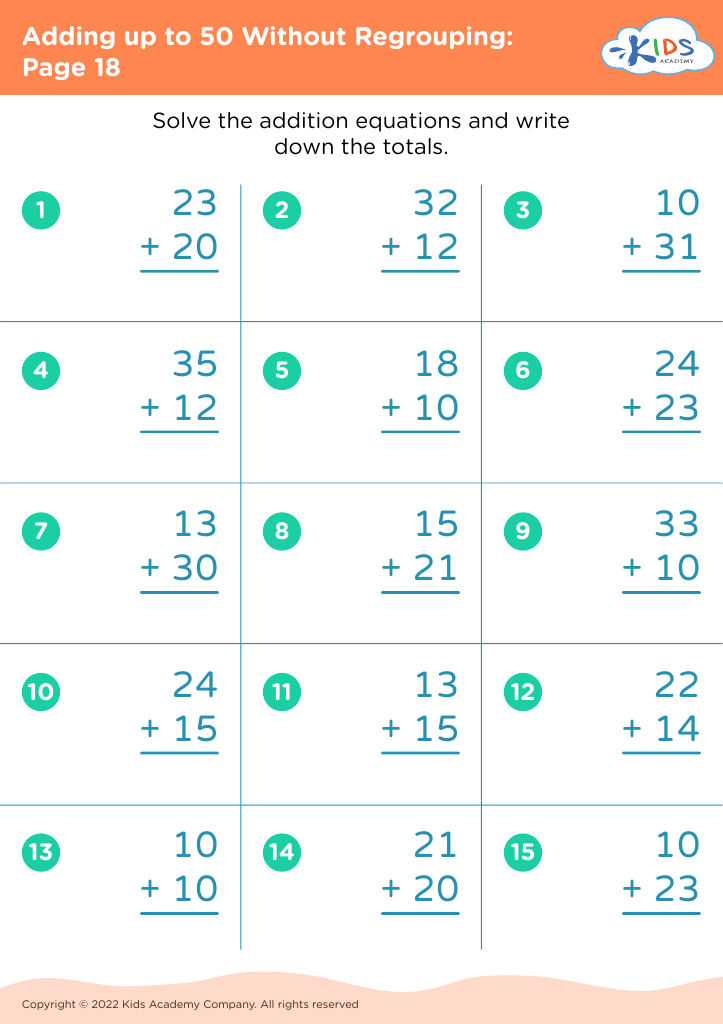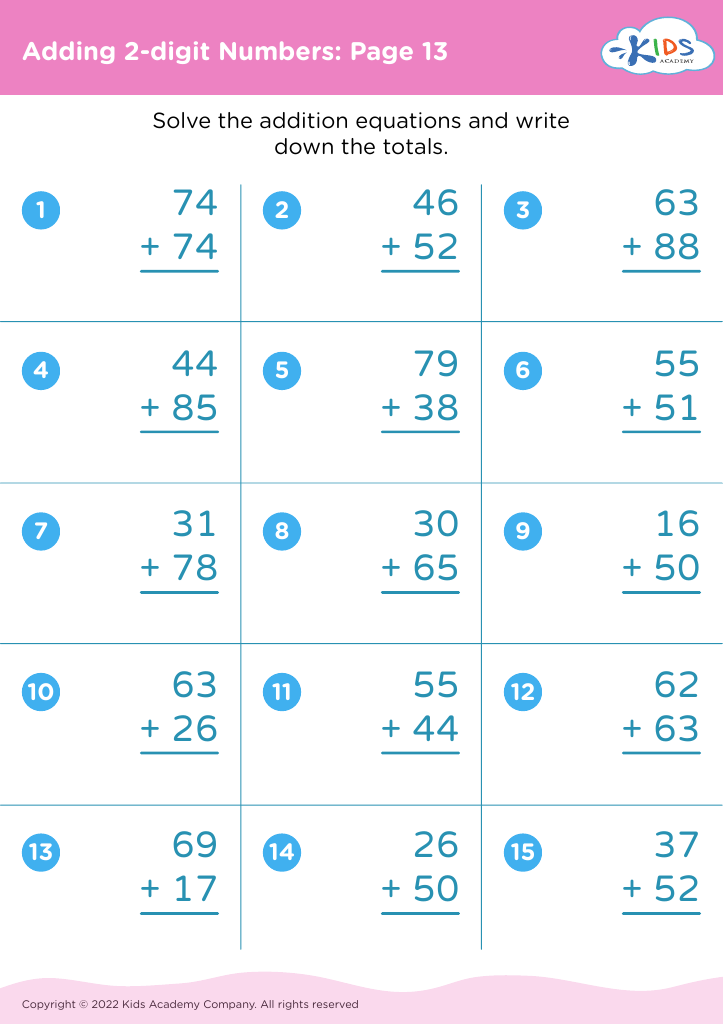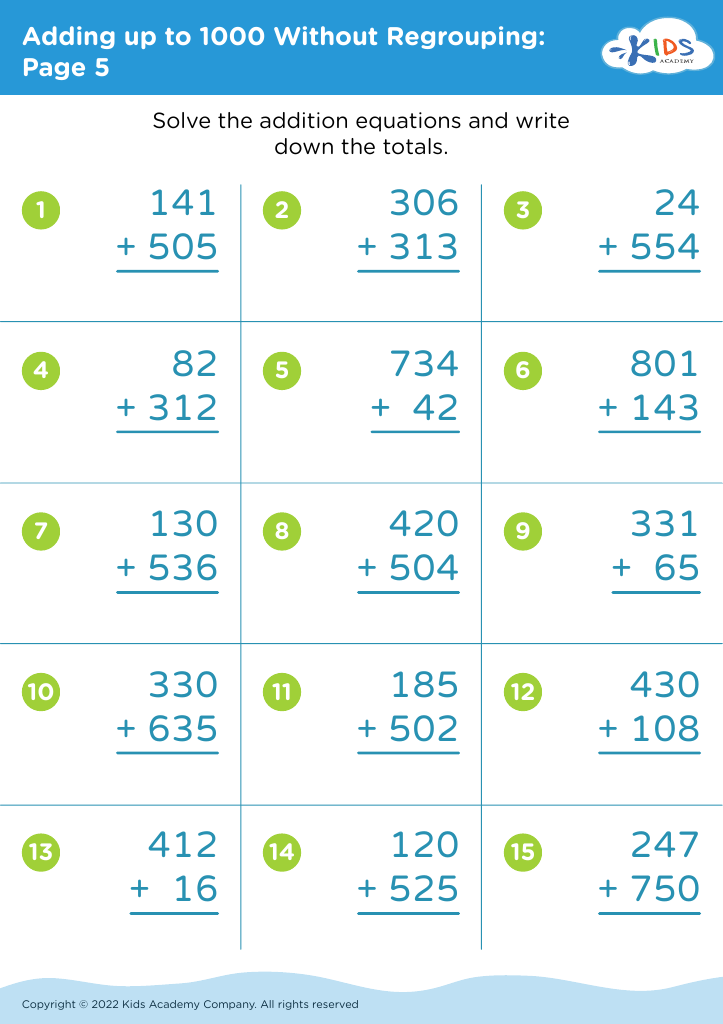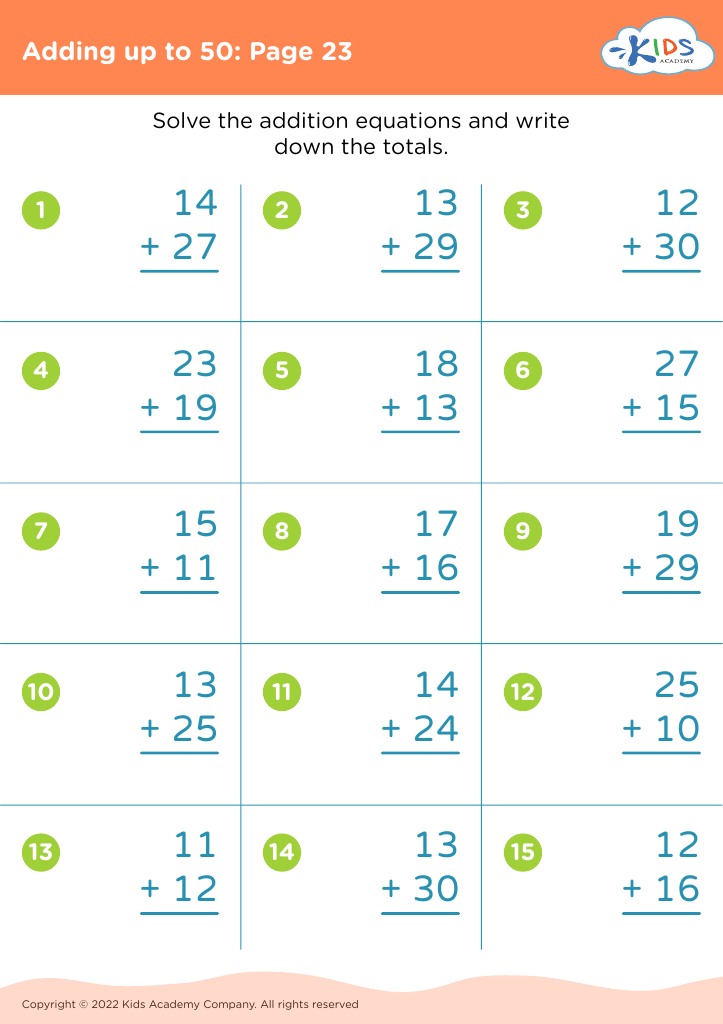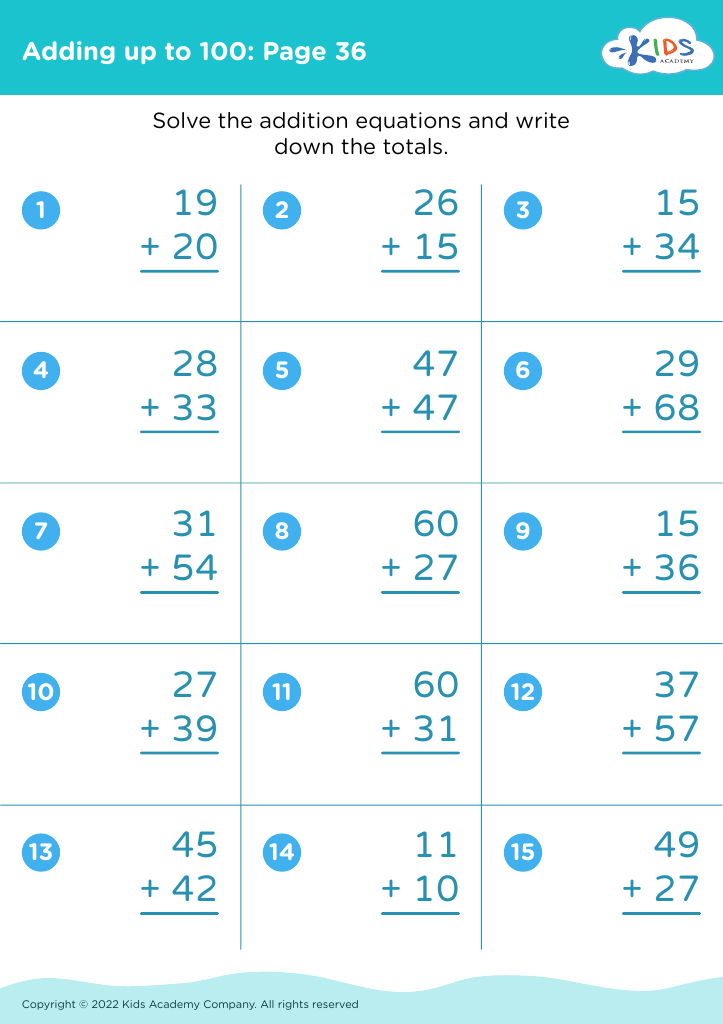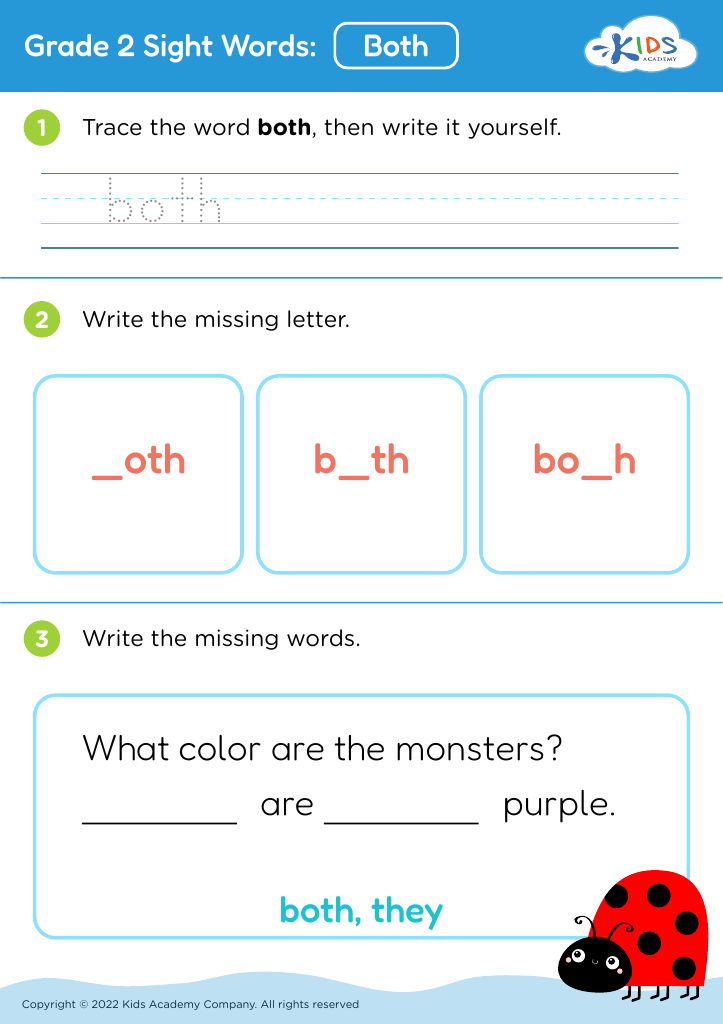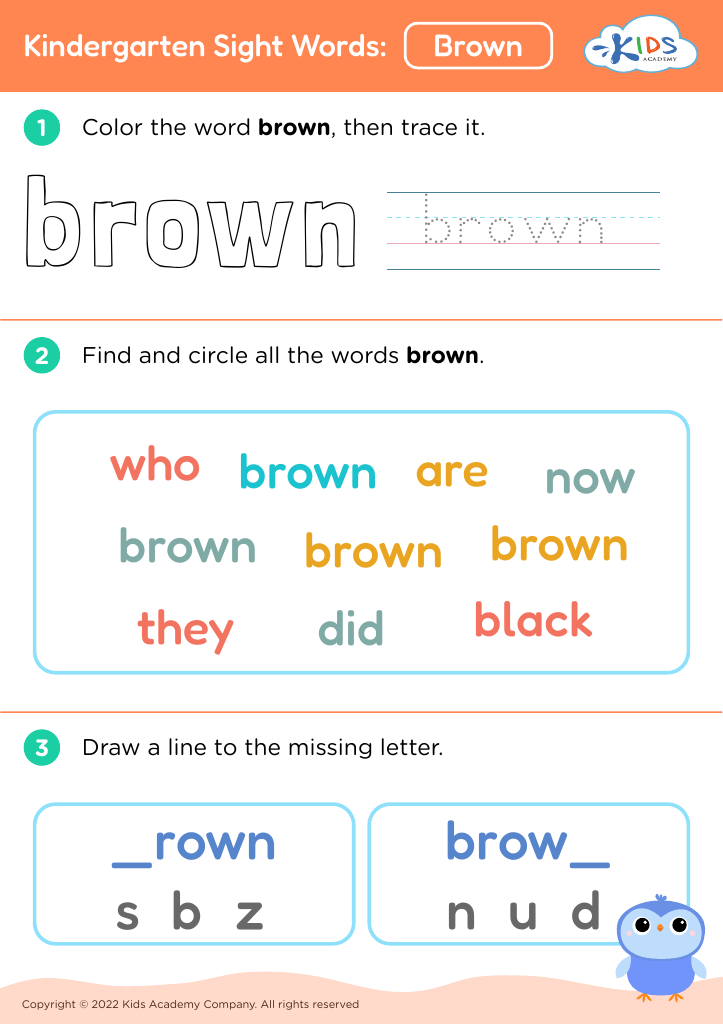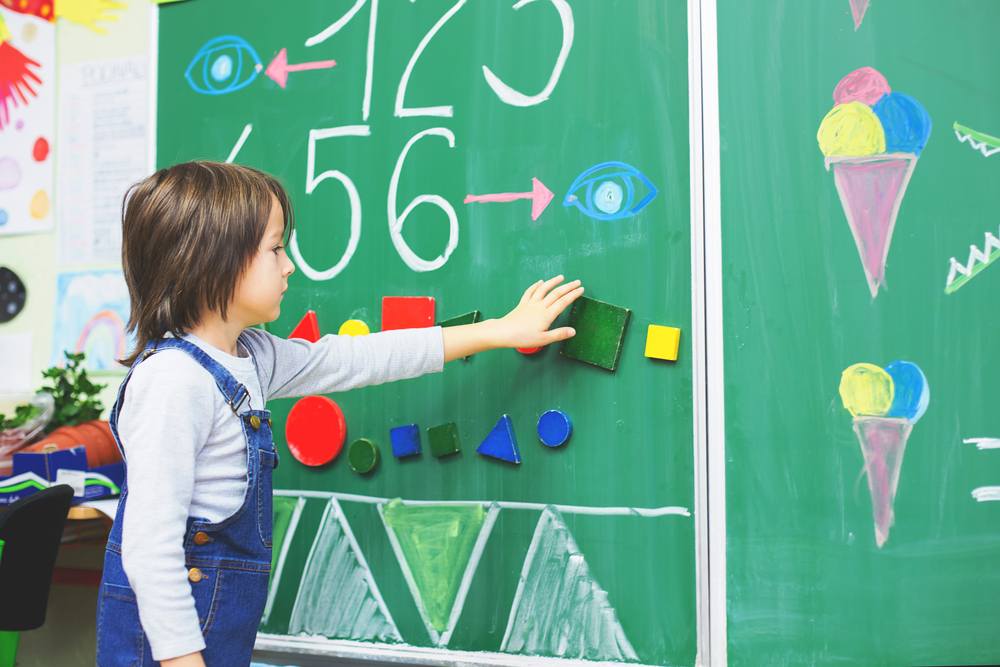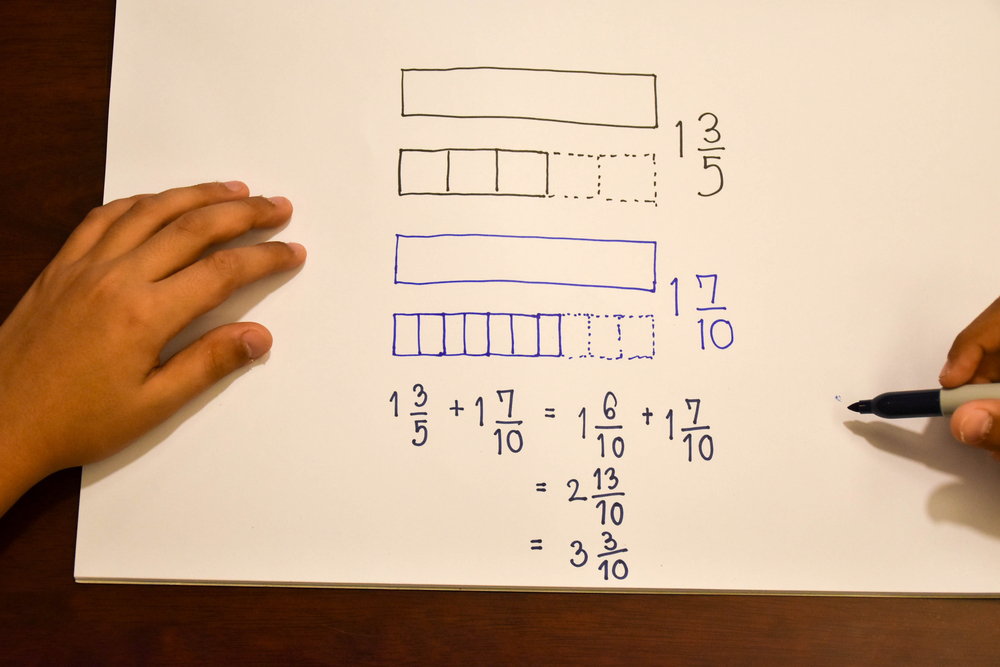Visual representation comprehension Worksheets for Ages 6-7
10 filtered results
-
From - To
Enhance your child's learning experience with our Visual Representation Comprehension Worksheets designed specifically for ages 6-7. These engaging resources help young learners develop critical thinking skills by interpreting images, diagrams, and charts. Each worksheet provides a variety of activities that encourage comprehension and creativity, making learning enjoyable. As children work through fun exercises, they improve their ability to analyze visual information and make connections. Ideal for classroom use or homeschooling, our worksheets support foundational skills in reading, math, and science. Explore now to boost your child's confidence and understanding through vibrant and accessible visual comprehension challenges!
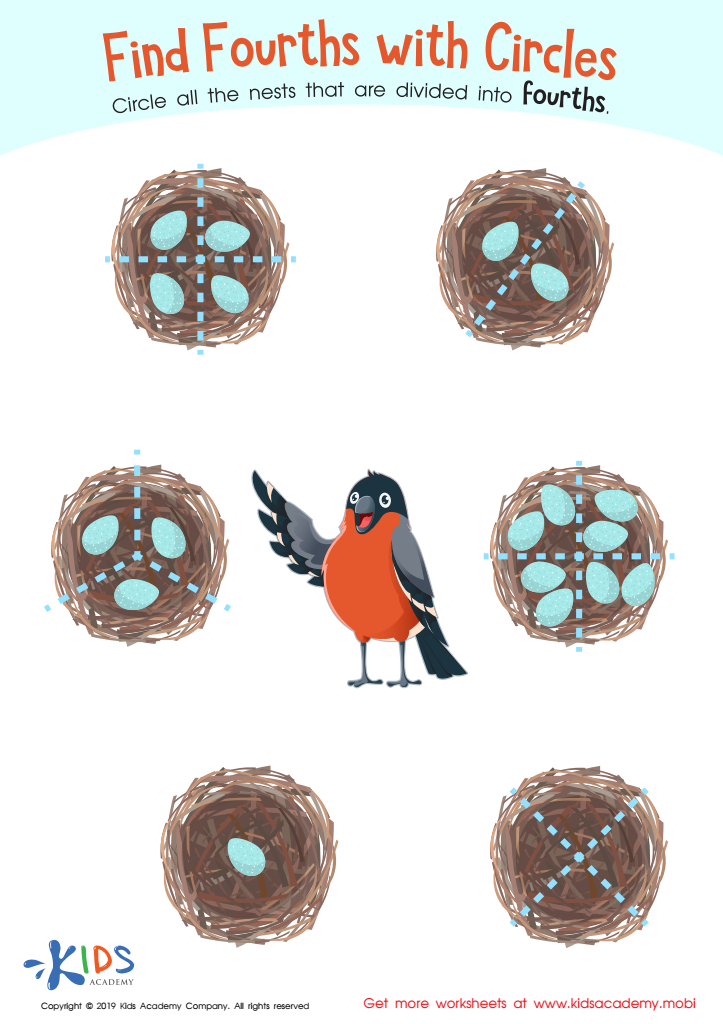

Find Fourths Circles Worksheet
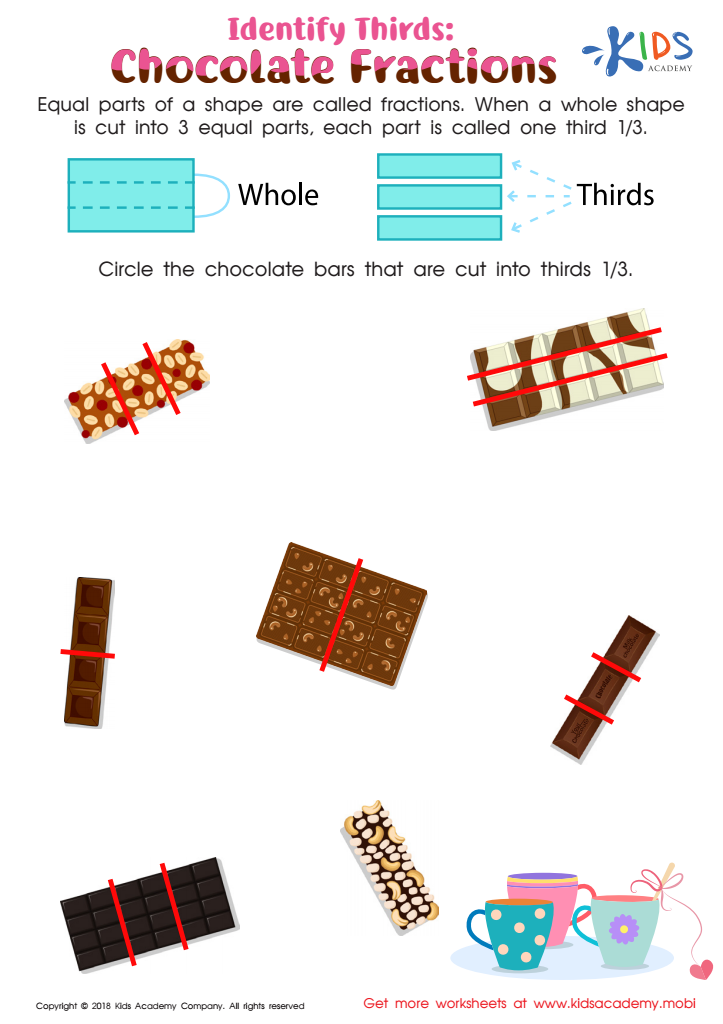

Identify Thirds: Chocolate Fractions Worksheet
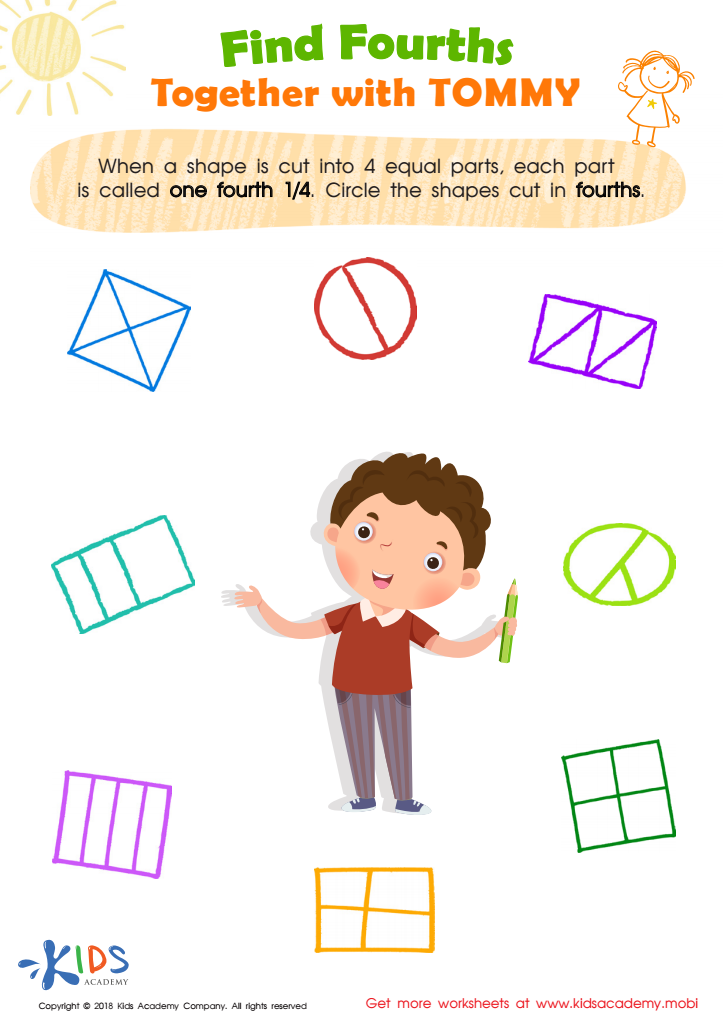

Find Fourths Together with Tommy Worksheet
Visual representation comprehension is crucial for children aged 6-7 as it fundamentally supports their ability to process and understand information. At this age, children engage with various forms of media and symbols—from pictures in books to graphs and charts. Understanding these representations enhances their ability to interpret information, which is essential for academic success in subjects like math, science, and reading.
When parents and teachers promote visual comprehension, they help children develop critical thinking skills, enabling them to draw conclusions and make inferences based on visual data. This skill fosters creativity, as children learn to express their ideas through diagrams or illustrations, and enhances their engagement with learning materials.
Furthermore, visual literacy contributes to effective communication skills; children learn to share ideas and information clearly through visuals. This is especially significant in a world saturated with images and digital content. By emphasizing visual comprehension, parents and teachers also create a foundation for lifelong learning—ensuring children become discerning consumers of information, capable of navigating complexities in both real and digital environments. Therefore, investing time in developing visual representation skills can profoundly shape a child’s cognitive abilities and overall academic journey.
 Assign to My Students
Assign to My Students
